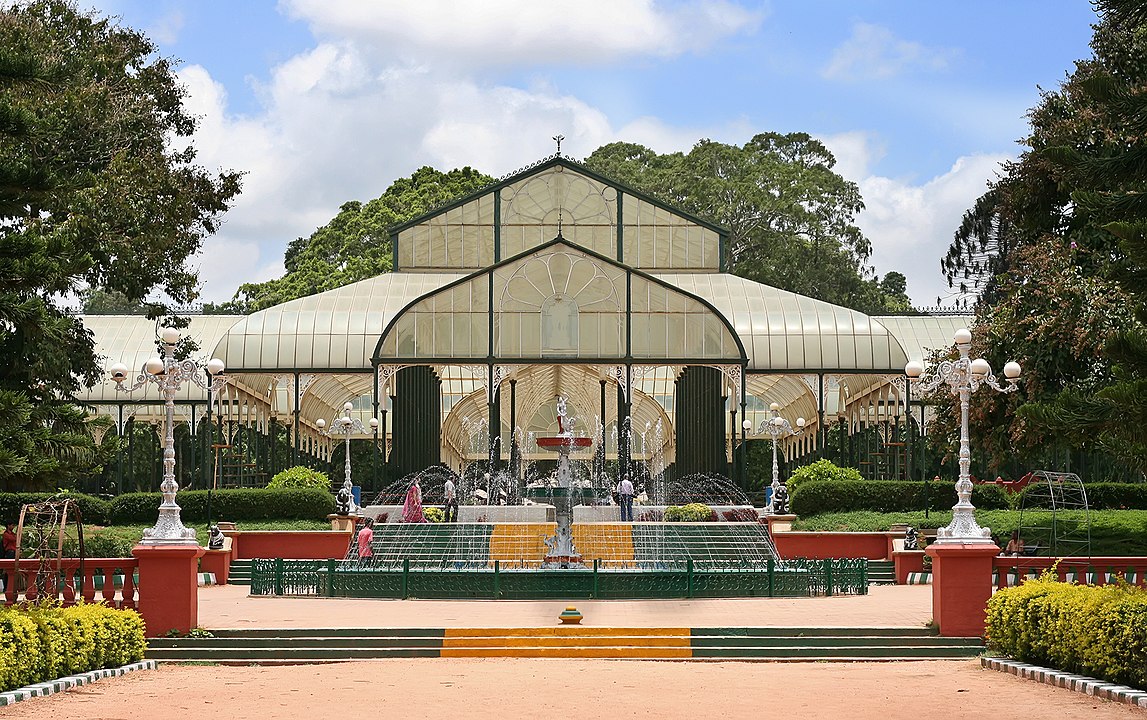Mavalli, Bengaluru Bengaluru Urban 560004
Description
Lalbagh Botanical Garden or shortened Lalbagh, is an old botanical garden in Bangalore, India. First planned and laid out during the dalavaiship of Hyder Ali and later managed under numerous British Superintendents before Indian Independence.
Hyder Ali commissioned the building of this garden in 1760 but his son, Tipu Sultan, completed it. A Bagh is Hindustani for garden while the reference of the prefix Lal is debated and could refer to the colour red due to its original floral composition but Lal also means "beloved". Hyder Ali decided to create this garden on the lines of the Mughal Gardens that were gaining popularity during his time. Hyder Ali laid out these famous botanical gardens and his son Tipu Sultan added horticultural wealth to them by importing trees and plants from several countries. Hyder and Tipu's Lalbagh gardens were managed by Mohammed Ali and his son Abdul Khader and were based on design of the Mughal Gardens that once stood at Sira, at a distance of 120 km from Bangalore. At that time, Sira was the headquarters of the strategically important southernmost Mughal "suba" (province) of the Deccan before the British Raj.
The Lalbagh gardens were commissioned by the 18th century and over the years it acquired India's first lawn-clock and the subcontinent's largest collection of rare plants.[3] After the British conquest of Kingdom of Mysore in 1799, the garden was under the charge of Major Gilbert Waugh, Company paymaster and in 1814 its control was transferred to the Government of Mysore with an appeal by Waugh to the Marquis of Hastings that it should be under the botanical garden at Fort William, Calcutta. This was accepted and the charge for supervision was given to Nathaniel Wallich on 24 April 1819. This continued until 1831 when charge moved to the Mysore Commissioner. An Agricultural and Horticultural Society had been formed with William Munro, an army officer and amateur botanist in charge of the Bangalore chapter. The Society wrote to the Mysore Commissioner, Sir Mark Cubbon, requesting charge of the Lalbagh garden. Cubbon granted control and during this period it was used for horticultural training. The Bangalore chapter of the Society was dissolved in 1842, leaving the gardens unmanaged.
In 1855, Hugh Cleghorn, was appointed as a botanical advisor to the Commissioner of Mysore. Cleghorn and Jaffrey, superintendent of the Madras Agri-Horticultural Society looked at various sites for a horticultural garden and found that Lalbagh suited their purpose despite being located at a distance from the Cantonment, the British centre of the city. He suggested that a European Superintendent be appointed with control under the Chief Commissioner. Cleghorn was against the use of Lalbagh for commercial enterprise and instead suggested that it should aim to improve the use of indigenous plants, aid in introducing useful exotic species and help in the exchange of plant and seed materials with other gardens at Madras, Calcutta and Ooty. Under Cubbon's orders, Lalbagh was made into the Government Botanical Garden in August 1856 and a professional horticulturist was sought from Kew. William New was recommended and he arrived at Bangalore on 10 April 1858. New's contract ended in 1863-64 and he was replaced by Allan Adamson Black who worked at the Kew Herbarium.
Black however suffered from poor health and resigned in 1865 and died after visiting his brother in Rangoon aboard HMS Dalhousie, off the Coco Islands on 4 December 1865.[5] New was then re-appointed. In his 1861 catalogue of the plants of Lalbagh, there were numerous economic and ornamental plants including Cinchona, coffee, tea, macadamia nuts, hickory, pecan, rhododendrons, camellias, and bougainvilleas. New died in 1873 and was followed by John Cameron, also from Kew. Cameron had the additional support of the Maharaja of Mysore who was appointed in 1881 and introductions included Araucarias (A. cookii and A. bidwilli), cypresses (Cupressus sempervirens), topiaries made from Hamelia patens.
In 1890-91, a central bandstand and the glasshouse (for flowershows) made with iron pillars cast by Walter Macfarlane and Company of Glasgow were added. Cameron also helped introduce commercial crops like cabbage, cauliflower, turnip, radish, rhubarb, celery, and kohlrabi. Trees introduced included the baobab from Africa, Brownea rosea from the Caribbean, and Catha edulis from Yemen.[6] Cameron retired in 1908 and was followed by Gustav Herman Krumbiegel.[4] A menagerie and an aviary had been established in the 1860s. A pigeon house or dovecot for 100 birds was built. Following the plague the maintenance deteriorated and there was a proposal to close the menagerie and aviary in the 1900s. in 1914. Captain S.S.Flower reported that it included a court built between 1850 and 1860 having tigers and rhinoceros; an aviary; a monkey house with an orangutan; a paddock with blackbuck, chital, Sambar deer, barking deer, and a pair of emus; a bear house and a peacock enclosure.
In 1874, Lalbagh had an area of 45 acres (180,000 m2). In 1889, 30 acres were added to the eastern side, followed by 13 acres in 1891 including the rock with Kempegowda tower and 94 acres more in 1894 on the eastern side just below the rock bringing it to a total of 188 acres (760,000 m2). The foundation stone for the Glass House, modeled on London's Crystal Palace was laid on 30 November 1889 by Prince Albert Victor and was built during the time of John Cameron. It was built with cast iron from the Saracen Foundry in Glasgow UK. This structure was extended in 1935, this time with steel from the Mysore Iron and Steel Company at Bhadravathi.
FEATURES
Timing
6 a.m. - 7 p.m.
CONTACT
Phone
080 2657 0181


